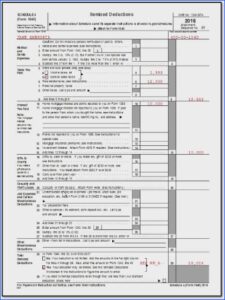
Accountants use the 10-column worksheet to help calculate end-of-period adjustments. Using a 10-column worksheet is an how to figure shorts and over entries in accounting optional step companies may use in their accounting process. Remember that the balance sheet represents the accounting equation, where assets equal liabilities plus stockholders’ equity. The regulatory framework, consisting of accounting standards such as GAAP and IFRS, establishes guidelines and rules for financial statement preparation. These standards ensure that financial statements are consistent, reliable, and comparable across companies and time periods.
Accountants must maintain the confidentiality of a company’s financial information and only disclose it to authorized parties. They should not use confidential information for personal gain or share it with unauthorized individuals. Get up and running with free payroll setup, and enjoy free expert support. Expenses could be various operating costs, like inventory, rent, or utilities.
- It shows the company’s ability to generate profits by measuring the difference between revenues and expenses.
- Financial statement preparation is a crucial aspect of a company’s financial management, involving the recording and reporting of its financial transactions and activities.
- Summing up the cash inflows and outflows from these categories gives you the net cash inflow or outflow during the reporting period.
- Your cash flow statement shows you how cash has changed in your revenue, expense, asset, liability, and equity accounts during the accounting period.
If you review the income statement, you see that net income is in fact $4,665. Financial statement analysis is the process of examining and interpreting a company’s financial statements to assess its financial health and performance. While not a direct part of financial statement preparation, it is essential for stakeholders to derive meaningful insights from the prepared financial statements. The statement of retained earnings (which is often a component of the statement of stockholders’ equity) shows how the equity (or value) of the organization has changed over a period of time. The statement of retained earnings is prepared second to determine the ending retained earnings balance for the period. The statement of retained earnings is prepared before the balance sheet because the ending retained earnings amount is a required element of the balance sheet.

Cash flow statement
The sub-ledger accounts are then aggregated into five general ledger categories (income, expenses, assets, liabilities, and equity). The next step is to post journal entries to sub-ledger accounts, which are accounts that record details and provide more context than the overarching general ledger. Sales transactions are posted to the sales ledger, credit sales are recorded in the accounts receivable ledger, and so on – you get the idea.
Beginning retained earnings carry over from the previous period’s ending retained earnings balance. Since this is the first month of business for Printing Plus, there is no beginning retained earnings balance. Notice the net income of $4,665 from the income statement is carried over to the statement of retained earnings. Dividends are taken away from the sum of beginning retained earnings and net income to get idle time vs overtime in cost accounting the ending retained earnings balance of $4,565 for January.
While there is a difference in the accounting standards between GAAP and IFRS, the purpose of each financial statement remains the same. I got a university degree to learn how financial statements work and how those numbers come together to give you a comprehensive financial picture. If you still have lingering questions about how to prepare financial statements, we can help you find the answers. Before you do anything else, you have to get your ducks in a row by compiling all relevant financial data, including sales invoices, receipts, bank statements, and expense reports. Preparing financial statements is an indispensable and comprehensive task — one that you have to nail to keep your business up and running. They must provide unbiased, accurate, and complete information in the financial statements to protect the interests of all stakeholders.
Statement of retained earnings
Once the trial balance information is on the worksheet, the next step is to fill in the adjusting information from the posted adjusted journal entries. For example, Celadon Group misreported revenues over the span of three years and elevated earnings during those years. The total overreported income was approximately $200–$250 million. This gross misreporting misled investors and led to the removal of Celadon Group from the New York Stock Exchange. Not only did this negatively impact Celadon Group’s stock price and lead to criminal investigations, but investors and lenders were left to wonder what might happen to their investment. Monitoring the cash flow statement helps predict cash flow issues and prepare for them before they turn into a major problem.
Noncurrent assets are items of value that take more than one year to convert into cash. Your cash flow statement, or statement of cash flows, is all of your business’s incoming and outgoing cash. Basically, your cash flow statement shows you how much cash flows in and out of your business.
Income Statement and Balance Sheet
Or, you can add your retained earnings statement to your balance sheet. Liabilities are debts you owe to other individuals, such as businesses, organizations, or agencies. Your liabilities can either be current (short-term) or noncurrent (long-term). Some examples of liabilities include accounts payable, accrued expenses, and long-term loan debt. Before you can dive how to use depreciation and amortization for your financial reports into the order of financial statements, find out what the main financial statements are. Check out a quick overview below of the four types of financial statements in accounting.
Our mission is to improve educational access and learning for everyone.
The IASB is an independent, international organization responsible for developing and promoting the adoption of IFRS worldwide. It aims to create a single set of global accounting standards that enhance transparency, comparability, and efficiency in financial reporting. Comparability refers to the ability to analyze and compare financial information across different companies or time periods.

Leave A Comment